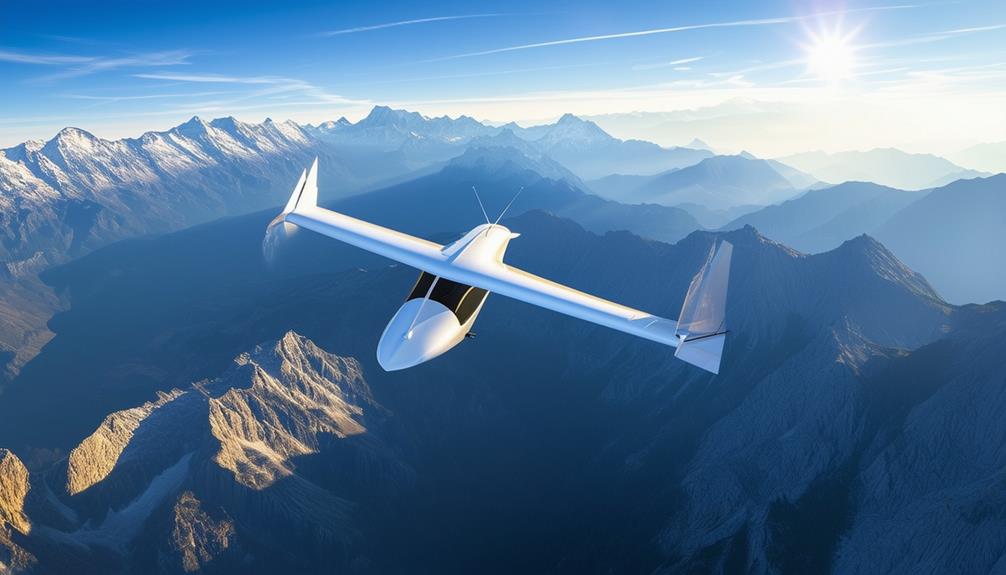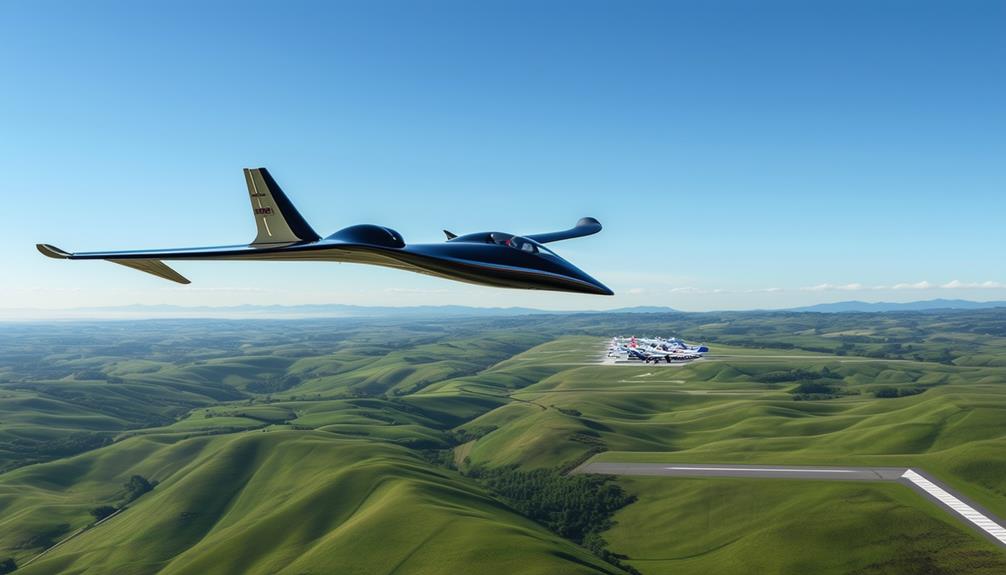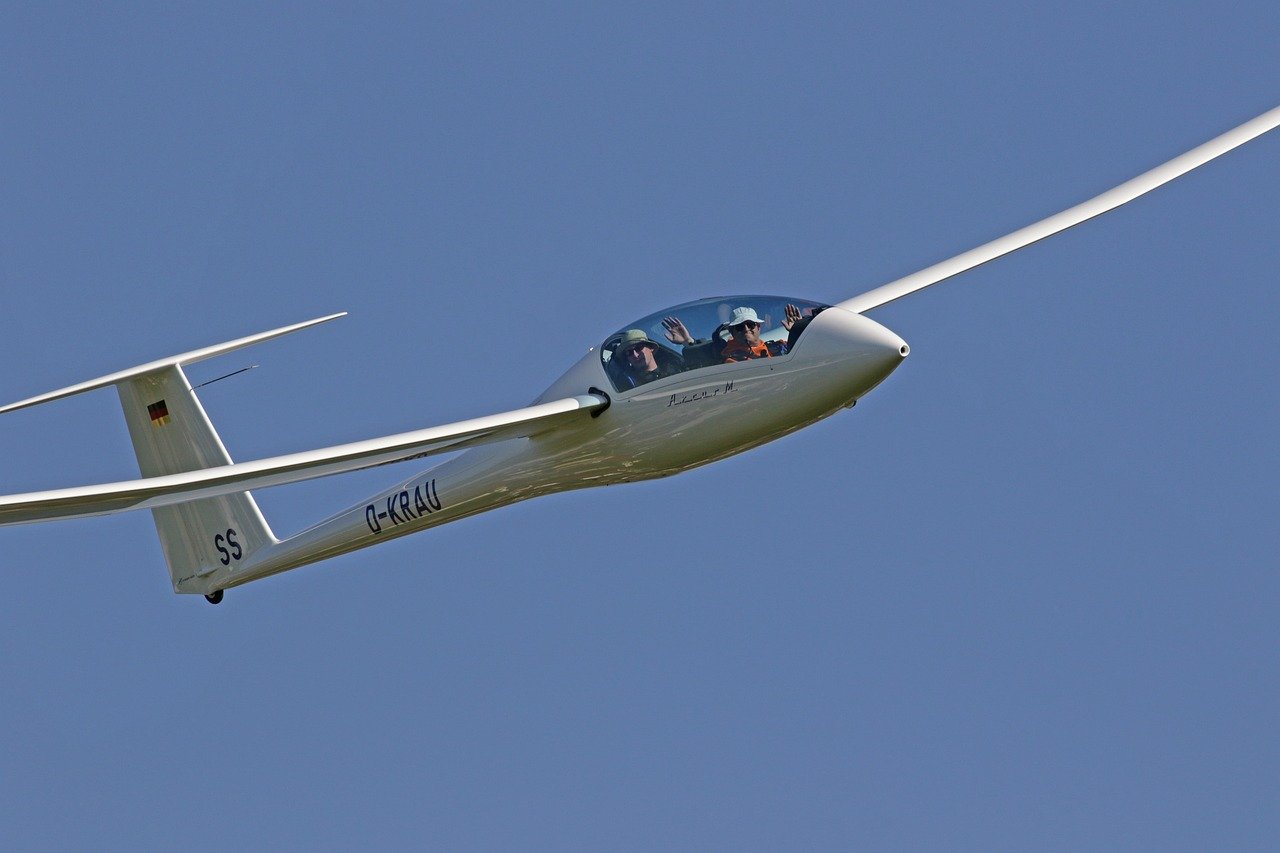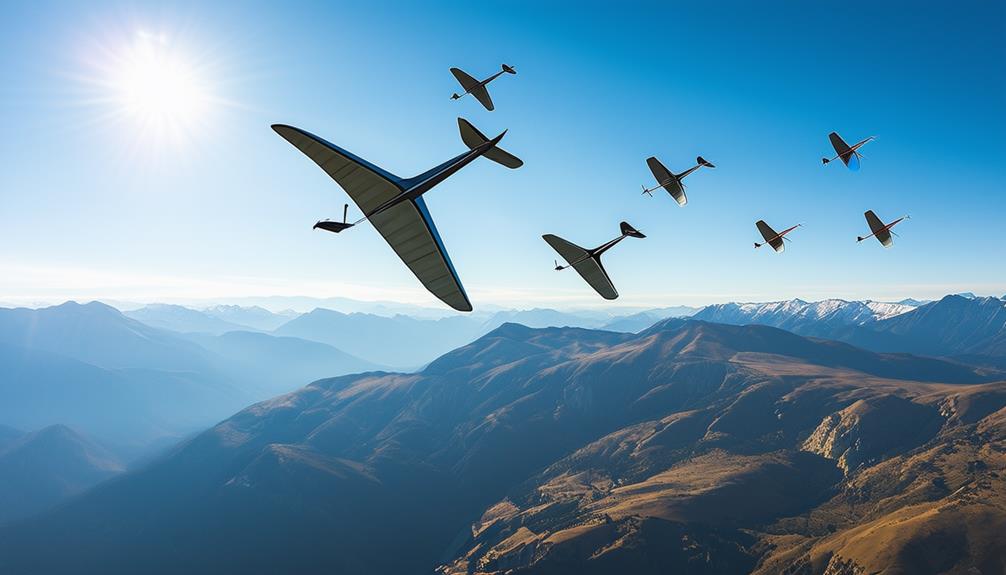The Impact of Altitude on Gliding Performance

Altitude isn't just a number on your altimeter; it's a critical factor in your gliding performance. Higher altitudes provide more potential energy, translating into longer and more efficient glides. Starting from higher elevations allows you to reach distant landing spots with greater ease and less drag, thanks to the thinner air. Understanding how these elements interplay can significantly impact your flight strategy and overall success.
So, how can you master the influence of altitude on your gliding?
Potential Energy and Altitude

Altitude plays a crucial role in determining the potential energy available to a glider for sustained flight. At higher altitudes, a glider has more potential energy, which can be converted into kinetic energy during descent, allowing it to cover greater distances. Essentially, the higher the altitude, the more energy buffer you have, enabling longer and more efficient glides.
A critical factor in gliding performance is the glide ratio, which represents the distance a glider can travel forward relative to the altitude lost. Higher altitudes allow for a better glide ratio, meaning the glider can travel further for each unit of altitude it descends. This relationship between altitude and glide ratio highlights the importance of altitude in determining glide duration and distance.
Practically, starting a glide from a higher altitude enables reaching distant landing spots that would be unattainable from a lower starting point. Therefore, maximizing altitude at the beginning of a glide offers a significant advantage in terms of both distance and duration.
Air Density Effects
At higher altitudes, the air becomes thinner, presenting unique challenges for gliding. To maintain stable performance, it's essential to understand how air density affects your glider. This knowledge allows you to optimize flight strategies across different altitudes, ensuring a consistent lift-to-drag ratio.
Thinner Air Challenges
At higher altitudes, thinner air reduces air density, impacting glider lift and drag. This decrease in air density affects your glide angle, as the glider generates less lift, necessitating adjustments in flying technique to maintain peak performance. A significant challenge is the decrease in the Reynolds number with altitude, influencing viscous effects and drag, complicating the management of aerodynamic efficiency.
Additionally, you may notice a higher true airspeed at these altitudes, which can be misleading when assessing overall performance. Despite these difficulties, the glide ratio remains constant because the reduction in lift is proportionally balanced by the reduction in drag. However, the perceptual and handling nuances of your glider's performance will change.
Thinner air demands greater vigilance and precision in control inputs to adapt to the shifting aerodynamic conditions. Understanding these challenges is crucial for successfully navigating and optimizing your glider's performance at higher altitudes.
Lift-to-Drag Ratio
Understanding the impact of air density on the lift-to-drag ratio is essential for optimizing your glider's performance at varying altitudes. As you ascend, air density decreases, resulting in less drag for the same amount of lift. This alteration directly affects the Reynolds number, a key factor in determining viscous effects and total drag. A lower Reynolds number at higher altitudes leads to reduced drag forces, potentially enhancing your glider's performance.
Interestingly, the glide ratio remains constant regardless of altitude because the lift-to-drag ratio maintains equilibrium between lift and drag forces. Changes in drag force, rather than lift force, influence this ratio, making altitude crucial in assessing your glider's performance.
Moreover, altitude influences ground speed, often giving the impression of improved performance at higher levels due to increased speed over the ground. This perceived enhancement is important for understanding how different altitudes can optimize your gliding strategy.
Lift and Drag Considerations

When evaluating lift and drag at varying altitudes, it's crucial to consider air density variations, which directly impact aerodynamic performance. Temperature fluctuations also significantly influence lift. Additionally, wind patterns can greatly affect gliding efficiency.
Air Density Variations
Higher altitudes lead to lower air density, reducing drag while maintaining the same lift. This change greatly impacts your glide speed and best glide performance. With reduced drag, you can achieve a higher true airspeed without compromising lift, allowing you to cover more distance efficiently. Your glide speed increases as you climb higher, optimizing your flight path.
Air density variations also affect the Reynolds number, influencing the viscous effects and drag on your glider. Despite these changes, your glide ratio remains constant because the balance between lift and drag forces is preserved. Understanding how drag force varies with altitude is essential for accurate performance prediction.
True airspeed increases at higher altitudes due to reduced drag, not an increase in lift. By maintaining your best glide speed, you can optimize efficiency and benefit from the altitude's advantages. Mastering these nuances will improve your gliding performance, resulting in smoother, longer flights.
Temperature Effects on Lift
Decreasing temperatures at higher altitudes impact lift by reducing air density, which in turn affects your gliding performance. As the air gets colder, its density decreases, leading to a lower lift coefficient. This reduction in air density means your glider generates less lift, making it harder to maintain altitude and requiring more precise control to optimize performance.
Lower air density at higher altitudes also affects drag. While you might think lower drag is beneficial, it's a crucial aspect. Reduced drag means less resistance, allowing for smoother and potentially faster gliding. However, the decreased lift can offset these benefits, demanding more skillful maneuvering to sustain effective glide ratios.
Temperature changes impact the speed of sound, altering the aerodynamic properties of your glider. This relationship between temperature, air density, lift, and drag is essential for understanding how your glider behaves at different altitudes.
As you ascend, you'll need to adjust your strategies to account for these variables, ensuring you enhance efficiency and effectiveness in your gliding maneuvers.
In essence, altitude-induced temperature effects profoundly shape your gliding experience. By understanding and adapting to these changes, you can better navigate the challenges and utilize the advantages presented by varying altitudes.
Wind Patterns Influence
Understanding how wind patterns influence lift and drag is vital for optimizing gliding performance at various altitudes. Wind patterns significantly impact the lift-to-drag (L/D) ratio, a crucial determinant of glide distance.
Tailwinds provide additional lift, enabling greater distance coverage with less effort. Conversely, headwinds increase drag, reducing glide efficiency and overall performance.
To optimize gliding efficiency, adapt flight strategies based on wind direction and intensity. Flying with a tailwind can enhance glide distance, while minimizing the impact of headwinds is essential for maintaining a favorable L/D ratio. By understanding and leveraging wind patterns, you can make informed decisions about flight path and altitude adjustments.
Moreover, wind patterns critically influence lift conditions at different altitudes. Updrafts and downdrafts caused by varying winds can elevate or lower your altitude. Mastering the impact of wind on lift and drag allows you to optimize gliding performance, ensuring maximum glide distance and efficiency.
Optimal Flight Levels
Selecting the appropriate flight level is crucial for maximizing a glider's performance and efficiency. When optimizing your gliding range, choosing the right altitude becomes a strategic decision. Higher altitudes often provide reduced drag and increased true airspeed, enhancing ground speed and allowing you to cover more distance effectively. By selecting an altitude where these conditions are ideal, you can achieve the desired glide ratio and optimize your flight.
Factors such as wind conditions, air density, and your glider's specifications significantly influence the best flight level. At higher altitudes, less dense air reduces drag on your glider, enabling it to maintain higher speeds and improve ground speed, facilitating more efficient travel to your destination.
Furthermore, understanding your aircraft's performance at various altitudes is essential for informed decision-making. Each glider has unique capabilities, and knowing these will guide you in selecting the most suitable flight level. The right altitude can greatly impact the success of your gliding flight, ensuring maximum efficiency and performance.
Weather and Atmospheric Conditions

Weather and atmospheric conditions are crucial for determining a glider's performance and efficiency. Wind speed and direction significantly impact a glider's capabilities. Favorable conditions, such as thermal updrafts and ridge lift, are essential for maintaining altitude and extending flight duration.
Temperature and pressure also play a role by affecting air density, which influences lift and drag forces. At higher altitudes, where air is less dense, lift is reduced, making sustained flight more challenging.
Additionally, atmospheric stability and moisture content can cause turbulence, disrupting smooth gliding and reducing efficiency. Understanding local weather patterns and atmospheric conditions is essential for optimizing gliding performance.
Techniques for Efficient Gliding
Mastering effective gliding techniques can significantly enhance your flight performance and extend your time in the air. One critical aspect is finding and utilizing thermals—columns of rising air that can lift your glider, enabling you to cover greater distances without losing altitude.
Adjusting your pitch attitude is essential for maintaining the optimal glide angle. This adjustment improves the efficiency of your glide and minimizes unnecessary drag.
Retracting your landing gear and minimizing surfaces like flaps can make your glider more aerodynamic, thereby enhancing performance.
Weight management also plays a crucial role. Utilizing water ballast in your wings can increase your gliding speed and overall performance, especially in stronger thermals and over longer distances. However, it's crucial to balance the ballast correctly to avoid negatively impacting control.
Lastly, always aim to maintain the most efficient glide speed based on your glider's polar curve. This speed maximizes your distance per unit of altitude lost, ensuring you cover the most ground efficiently.
Conclusion
In summary, understanding the impact of altitude on gliding performance is crucial for optimizing flight efficiency. Utilizing the potential energy from higher altitudes allows for greater distance coverage and reduced drag due to thinner air.
Key factors to consider include air density, lift, and drag, along with ideal flight levels and weather conditions. Mastering these elements will enable you to achieve the most efficient and successful gliding experience.




